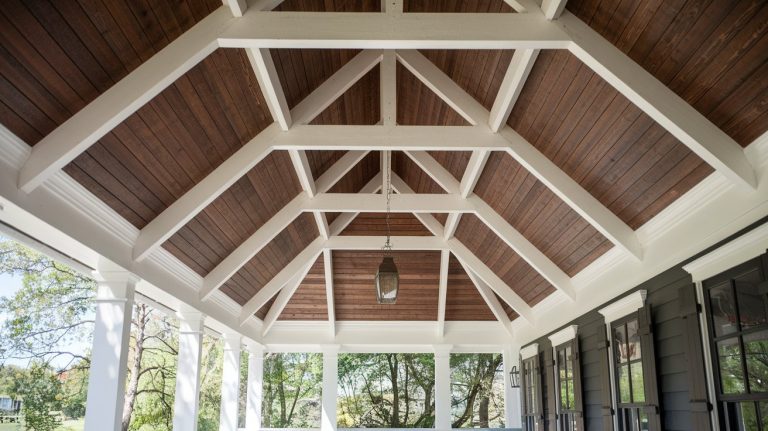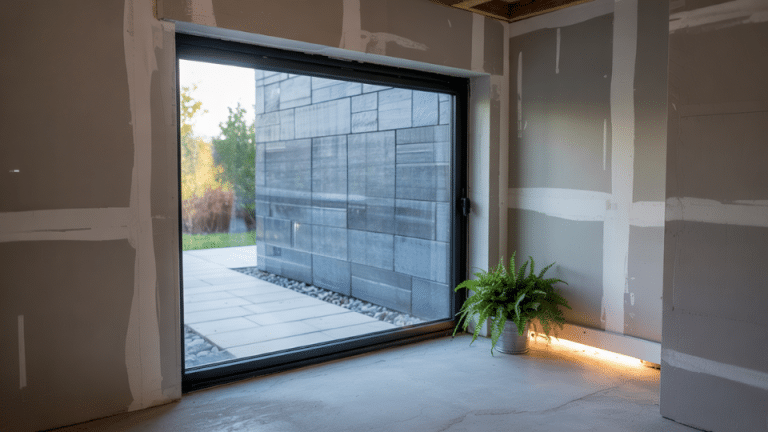Paint Your Bathroom Sink in Just One Day
Is your bathroom sink stained, scratched, or simply outdated? Most people think replacement is the only option, but it’s not. Painting your sink saves you hundreds of dollars and hours of messy plumbing work.
A painted sink costs just $30-$100 compared to $150-$600+ for replacement. Beyond cost savings, you get complete control over colors and finishes that might not be available in store-bought models.
With basic tools and one day of work, you can turn an old, worn sink into a fresh, clean surface that matches your bathroom style perfectly. The results can last 2-5 years with proper care.
Ready to update your bathroom without the high cost? Follow this simple guide to paint your sink in just one day.
Can a Bathroom Sink Be Painted?
Yes, a bathroom sink can be painted, and it’s a practical, cost-effective alternative to replacing it. Whether you’re working with a porcelain, ceramic, acrylic, or even metal sink, painting is a viable option if the right products and methods are used.
Types of Sinks You Can Paint
Most bathroom sinks can be successfully painted, including:
-
Porcelain sinks
-
Ceramic sinks
-
Acrylic or fiberglass sinks
-
Metal sinks (such as stainless steel or cast iron)
The key is selecting a paint designed to withstand moisture, frequent use, and temperature changes. Epoxy-based paints or appliance paints are typically recommended for this purpose.
Paint Types to Use for Bathroom Sinks
Choosing the right type of paint is crucial when it comes to painting a bathroom sink. Since the surface is constantly exposed to water, heat, cleaning products, and daily wear, not all paints will hold up over time. Below are the most effective and commonly recommended paint types for this type of project:
1. Epoxy Paint
Epoxy paint is the most popular choice for refinishing bathroom sinks. It consists of a resin and a hardener that, when mixed together, create a strong, water-resistant coating.
Application Tips:
-
Available in brush-on or spray form
-
Requires thorough prep work (cleaning, sanding, and priming)
-
Follow the curing time instructions precisely for best results
2. Appliance Epoxy Spray Paint
This is a spray-on version of epoxy paint, often used for appliances like refrigerators, dishwashers, and washing machines. It also works well on bathroom sinks.
Application Tips:
-
Best used in a well-ventilated area with masking to protect surrounding surfaces
-
Multiple light coats are better than one heavy coat
-
Allow adequate drying time between coats
3. Two-Part Tub and Tile Refinishing Kits
These kits are designed specifically for painting bathroom fixtures such as tubs, tiles, and sinks. They typically include a two-part epoxy paint, primer, cleaner, and sometimes sanding tools.
Application Tips:
-
Follow all kit instructions carefully for best adhesion
-
Kits may include everything needed for the job, making them beginner-friendly
-
Requires proper curing time, usually 24–72 hours
4. Acrylic Urethane Paint (Less Common)
While not as commonly used for sinks, acrylic urethane is sometimes chosen for its flexibility and resistance to chemicals. It can work on metal sinks or unusual surfaces with proper priming.
Application Tips:
-
Requires a quality primer for bathroom surfaces
-
Best suited for light-use or decorative sinks
-
Not ideal for sinks with daily water exposure
Step-by-Step Guide to Painting Your Sink in One Day
Painting your sink can give it a fresh look. This guide will show you how to paint your sink properly. We’ll share the exact steps and materials you need. You’ll learn how to prep, paint, and finish your sink well. Let’s start!
Materials Needed
| Item | Purpose |
|---|---|
| Hair dryer | For removing old caulking |
| 320 grit sandpaper | For initial surface preparation |
| 400 grit sandpaper | For sanding between coats |
| Respirator mask | To protect from paint fumes |
| Safety goggles/glasses | To protect eyes |
| Hat | To protect hair from overspray |
| Old clothes | To wear during painting |
| Spray paint for sinks | Main painting material |
| Towels (damp and dry) | For cleanup and preparation |
| Coverings (plastic/sheets) | To protect surrounding areas |
| Nail polish remover | For cleaning up overspray |
| Cotton pads | For applying nail polish remover |
Step 1: Remove Old Caulking (If Needed)
If your caulking is worn out, you’ll need to remove it. Use a hair dryer on high heat to soften the old caulking. This makes it much easier to scrape off. Wear a mask during this process to avoid breathing in particles.
Step 2: Sand the Surface
Sanding helps the paint stick better to your sink. Use 320 grit sandpaper to sand all sink surfaces. Sand in small, circular motions. Make sure to reach all corners and edges. Wipe away dust with a dry towel. Follow up with a damp towel to catch remaining dust. Let the surface dry fully before moving on.
Step 3: Cover Surrounding Areas
Paint spray can travel far, so protect your bathroom. Cover all nearby surfaces with plastic or old sheets. Don’t forget to cover the floor. Place covering under doors to prevent spray from escaping. Tape coverings securely in place. Check twice to make sure everything is well protected.
Step 4: Protect Yourself
Spray paint can be harmful if inhaled or contacted. Put on a quality respirator mask. Wear safety glasses or goggles. Cover your hair with a hat. Dress in old clothes you don’t mind getting paint on. Consider wearing gloves to protect your hands.
Step 5: Apply First Coat of Paint
Now it’s time to start painting your sink. Shake the spray can well before using. Hold the can about 10-12 inches from the surface. Use slow, sweeping motions across the sink. Overlap each pass slightly for even coverage. Apply a thin first coat rather than a thick one. Let the first coat dry completely (overnight is best).
Step 6: Sand Between Coats
Sanding between coats creates a smoother finish. Use 400 grit sandpaper for a light sanding. Be gentle – you’re just smoothing, not removing paint. Wipe away all dust with a dry cloth. Follow with a damp cloth to remove any remaining residue. Dry the surface completely with a clean cloth.
Step 7: Apply Second Coat
The second coat will give your sink a more complete look. Follow the same spray technique as the first coat. Pay extra attention to edges and corners. Apply evenly using the same slow, sweeping motions. Make sure to cover any spots that look thin. Allow to dry fully according to paint can instructions.
Step 8: Clean Up Any Overspray
Sometimes paint gets where it shouldn’t – here’s how to fix it. For hard surfaces, use nail polish remover (acetone) on cotton pads. Test on a small area first to ensure it won’t damage the surface. Gently rub the overspray until it lifts away. For stubborn spots, let the acetone sit for a few seconds. Wipe the area clean with a damp cloth afterward.
Tips for Long-Term Care
- Avoid harsh cleaning products on your painted sink.
- Use soft cloths for cleaning rather than abrasive sponges.
- Touch up any chips promptly to prevent further damage.
- Consider a clear coat if recommended by the paint manufacturer.
- The paint job can last a year or more with proper care.
Video Tutorial
Refer to the video by Secret Garden & Home for a complete visual tutorial:
Do Painted Sinks Last?
Painted bathroom sinks can last for several years if the right products and techniques are used, but their durability depends on a few key factors.
Factors That Affect Durability
-
Surface Preparation
Proper cleaning, sanding, and priming are essential. If the paint doesn’t adhere correctly, it may start to chip or peel within months. -
Type of Paint Used
High-quality epoxy or appliance paints are designed to withstand water, heat, and daily wear. Using the wrong type of paint—such as standard wall paint—can significantly reduce the lifespan. -
Curing Time
Paint must be given ample time to fully cure (not just dry to the touch). Rushing this step can lead to early peeling and water damage. -
Sink Usage
Sinks that experience heavy use (like brushing teeth or shaving multiple times a day) will show signs of wear faster than guest or powder room sinks. -
Cleaning Products
Harsh abrasives or strong chemical cleaners can damage the paint. Gentle, non-abrasive cleaners help preserve the finish.
Painted Sink vs. Replaced Sink Comparison
Not sure whether to paint or replace your bathroom sink? This side-by-side comparison breaks down the key differences in cost, durability, and effort to help you choose the best option for your space.
| Feature | Painted Sink | Replaced Sink |
|---|---|---|
| Cost | Low (typically $30–$100) | High (typically $150–$600+, incl. labor) |
| Time Required | 1–2 days (including curing time) | 1–3 days (includes removal & plumbing) |
| Durability | 2–5 years with proper care | 10+ years depending on material |
| DIY-Friendly | Yes, with basic tools and prep | Less so; may require professional help |
| Customization | High – wide color/finish options | Moderate – limited to available designs |
| Mess & Disruption | Minimal | Moderate to high (plumbing work involved) |
| Long-Term Value | Temporary upgrade | Permanent investment |
| Eco-Friendliness | Reuses existing materials | May contribute to landfill waste |
Conclusion
Now you know how to transform your old sink into something fresh and new. This project offers a smart way to update your bathroom without spending much money or time.
Remember these key points: prep well, protect your space, apply thin coats, and be patient with drying times. Follow the care tips to make your painted finish last longer.
So what’s next? Take a look at your bathroom sink. If it’s showing wear or you simply don’t like the color, grab your supplies and set aside a weekend day. Your wallet will thank you compared to full replacement costs.
Have questions about the process? Leave a comment below! We’d also love to see your before-and-after photos of your newly painted sink.
Frequently Asked Questions
Can You Epoxy a Sink?
Yes, epoxy is one of the best options for painting sinks due to its strong adhesion, water resistance, and durability.
What Is the Best Paint for Sinks?
Epoxy-based paint or appliance epoxy is the best choice, as it’s specifically designed for high-moisture, high-use surfaces like sinks.
What Is the Most Popular Sink Color?
White remains the most popular sink color for its clean, classic look and versatility in any bathroom design.
How Long Does Refinishing a Sink Last?
With proper prep and care, a refinished sink can last between 2 to 5 years before needing touch-ups or reapplication.
















